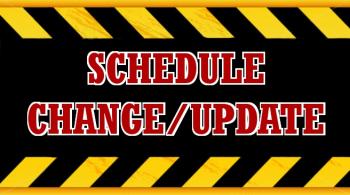Once, back in my Navy days, I was the Chief Engineer on a cruiser. Â This was a 24/7 job where it seemed that everything was a priority all of the time. Â I was having a conversation with the commanding officer about setting priorities and he said, “When in doubt, shoot the wolf closest to the sled.”
I’ll never forget that bit of advice and it has served me well over the years.
However, if you are not in a perpetual crisis mode, if you are in the game for the long run, this may not be the right advice for you.
Focusing in on one issue can cause any of the following problems: (1) you may miss an opportunity because you ignore a complimentary issue that would be easily solved in parallel with your current one, (2) Fixing your issue may cause another issue to pop up somewhere else, (3) Building a coalition with others allows you to get help on your issue in return for help on someone else’s issue and (5) The squeaky wheel gets the grease, not necessarily the one that needs is the most.
At Shiftwork Solutions, we are most often asked: Do you have schedules? Â Do you engage the workforce? Â Can you tell us how many people we need to staff our needs?
The answers to all of these are YES!  Those are easy things to do.  However, if these are the only issues addressed, your shift scheduling solution will almost certainly be less successful than its full potential.
Let me give you an example: Â A bakery with 750 employees wants to go to a 24/7 operation. Â They need a schedule. Â They would like to engage the workforce. Â They want to know how many people they will need to hire.
We know that a schedule change in production has many more moving parts than just a day-on-day-off pattern. Â It’s time to use our Peripheral Vision; looking for those out of focus issues that are part of the whole but are not currently right in front of us. Â For this project, we also looked at the following:
- What are your labor alternatives (temps, part-time, full time and overtime)? Â What does each of these alternatives cost and what makes each of them advantageous in their own way?
- When do you do sanitation and why? Â Can you do fewer sanitations? Â Can you do shorter sanitations? Â What is the limiting factor on how fast you can do sanitation? Â Are there capital improvements that will help? Â How much will these costs and how much will they save?
- When do you do R&D? Â Is if flexible? Â Is it consistent?
- How much maintenance is needed: Weekly, daily, preventative or corrective? Â How are you currently staffed to conduct maintenance? Â Does that schedule match your needs or do you find you are both understaffed and overstaffed within the same week?
- Can we do things like changeovers, maintenance, and sanitation in parallel rather than in series (at the same time instead of one after the other)?
- What is the cost of capital?  What is the Net Present Value of a delay in acquiring major equipment?
- Are the sales variable or flat? Â Are they growing?
- What is the shelf-life of your product? Â How fast do you turn over your warehouse? Â Do you co-pack or use co-packers?
- What are the goals corporate has given you to meet?
- If we solved this problem, would it come up again in a year or two?
- Was is the local employment level? Â What is your competition for labor doing that you are not?
- How long does it take to train for different critical positions?
- What’s your turnover; especially in critical positions?
- How is your quality department staffed in relation to production?
- Are your vendors and outside material providers flexible enough to meet any schedule that you put in place? Â If not, what are their restrictions?
- Do you consider your first-line supervisors superior or adequate? Â Do you promote from within or bring in outsiders?
- Is the workforce accustomed to participating in some production decisions?
- Do you have a continuous improvement program? Â How advanced do you consider it? Â Is there a way that a better schedule can facilitate this effort?
- What is your OSHA recordable rate?  How does this compare to the industry standard?  Why do you think you are doing so well or so poorly?
As you can see, there are a lot of moving parts. Â Nothing is ever static. Â All of these are in a constant state of flux. Â Priorities shift back and forth and every day there is a different wolf that is closest to the sled.
We know this because at Shiftwork Solutions we have 30 years of experience working with companies to address all of these issues – in unison.
Anything short will give you a less than optimal solution to whatever situation you are looking into at the moment.
Call us. We can help.
Call or text us today at (415) 763-5005 to discuss your operations and how we can help you solve your shift work problems. You can also complete our contact form and we will call you.



